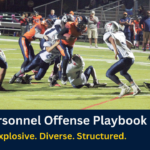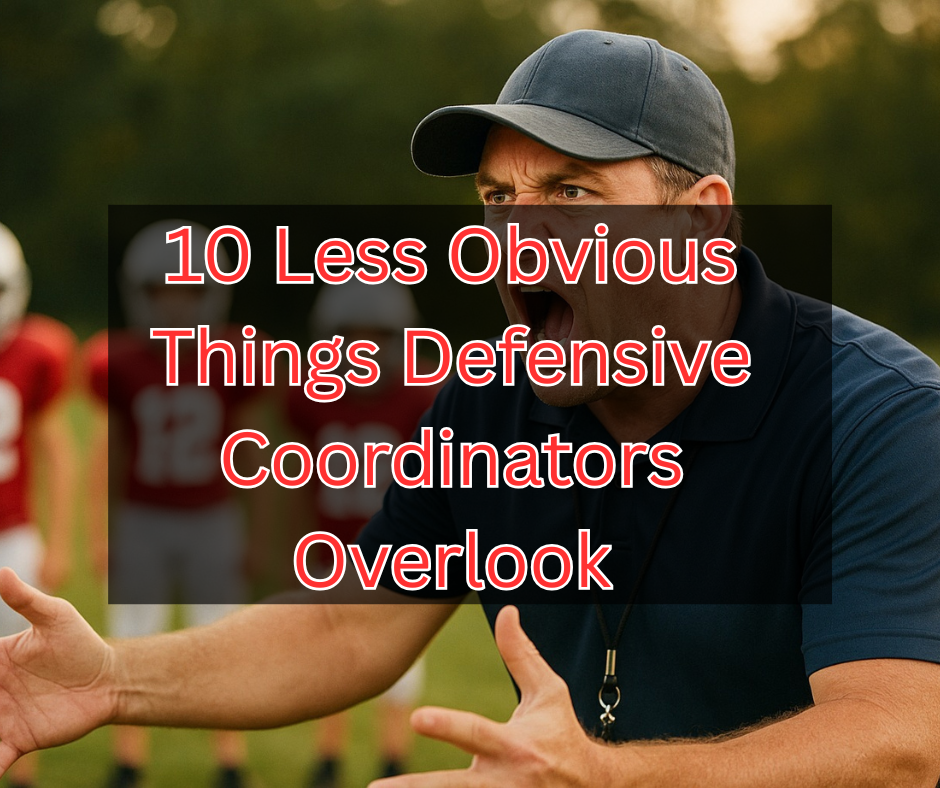5 Best Trick Plays for Youth Football | Greatest Trick Plays
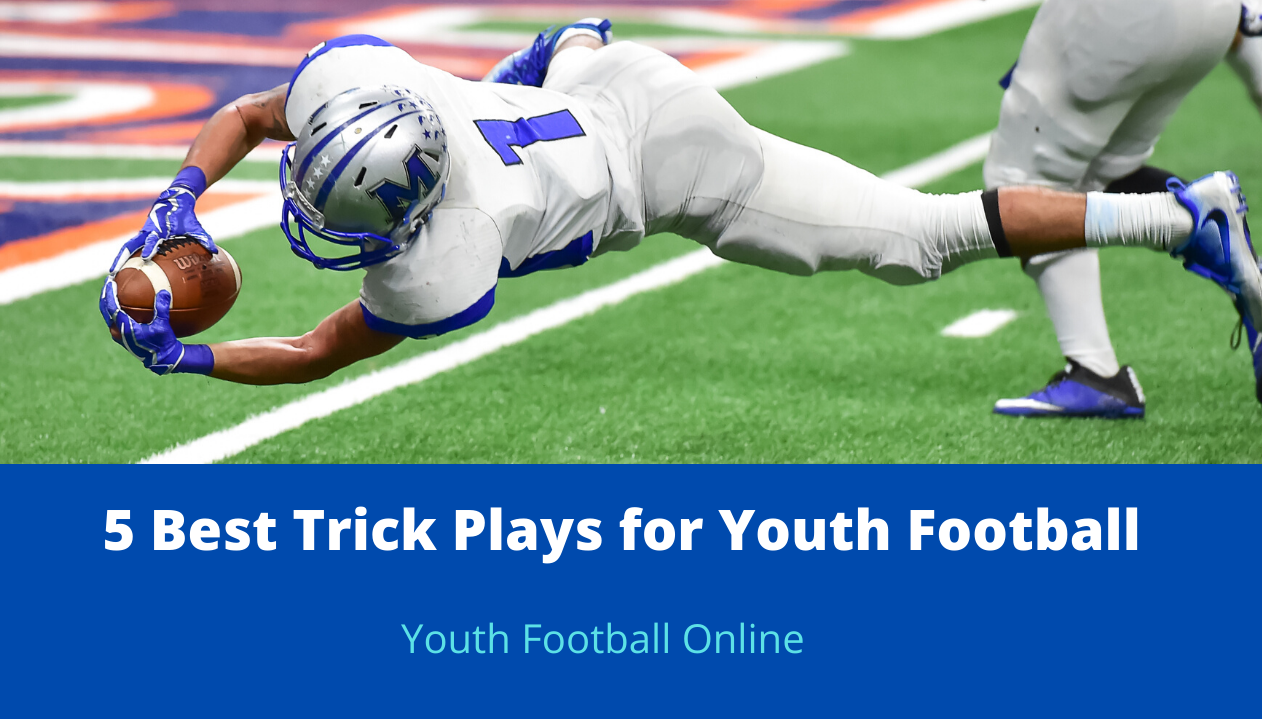
These are our 5 best trick plays for
Here are the 5 Best Trick Plays for Youth Football
- Halfback Pass (I-formation)
- Hook and Ladder (spread 2×2)
- Shovel Pass (Spread 2×1)
- Reverse Pass (I-formation)
- Boise State Football
Halfback Pass Trick play
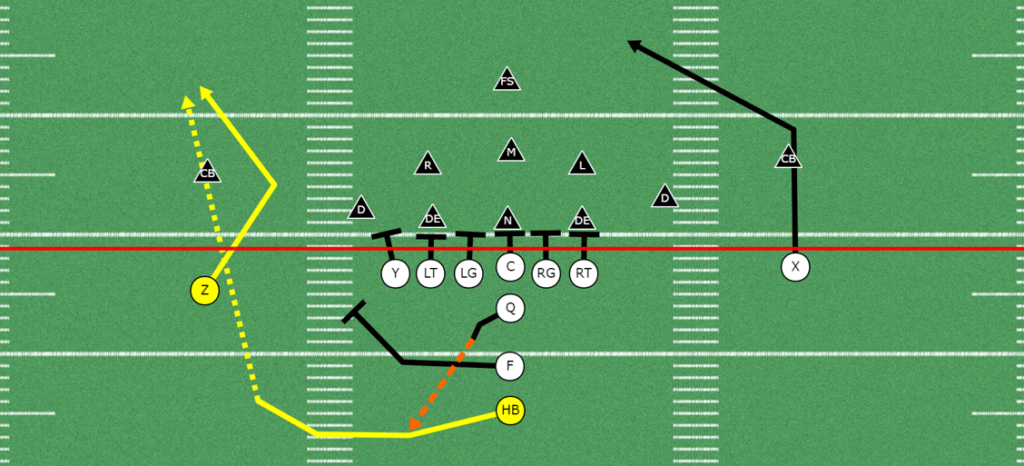
I had to start off with everyone’s favorite trick play- the Halfback Pass! This is a play that works on all ages levels of football- from the pros all the way down to
Coaching Points
- The QB needs to execute a good pitch right to the running back. A bad pitch will mess up the entire play- so practice it!
- The RB must catch the pitch and run like he is going outside, don’t show pass too early.
- Get a little depth into the backfield before you throw. This will give your HB more time to throw.
- Run Toss 2 or 3 times before calling this Toss Pass.
Hook and Ladder
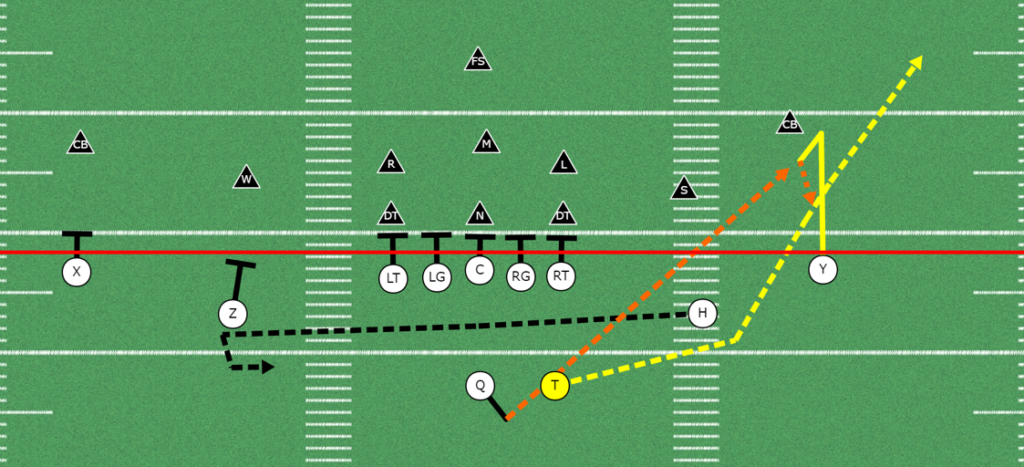
The Hook and Ladder is another classic! This one is a little more difficult to execute, but it can be done if practice time is committed to it. This is a great play for when teams are playing off coverage. When defenses sit back you can call this play. A lot of times the cornerbacks will play off coverage on long down and distances and when they drive on the hook route, they won’t even notice the RB coming out of the backfield for the pitch. It’s a very deceptive play that almost always works (if executed properly). With that said, you do need a good throw, good route, good catch and a good pitch in order to have success with this play. You do have to commit practice time to this play.
Coaching Points
- Practice throwing the hook every single practice. The route timing needs to be practiced.
- Make sure the receiver running the hook comes back to catch the ball and goes to the RB before he pitches.
- The RB (ladder player) timing needs to be practice. It does vary depending on age level and athletic ability.
- I wouldn’t run this play with kids under 10. That’s just my opinion.
See Also: 5 Great Play from the Spread Offense
Shovel Pass (option)
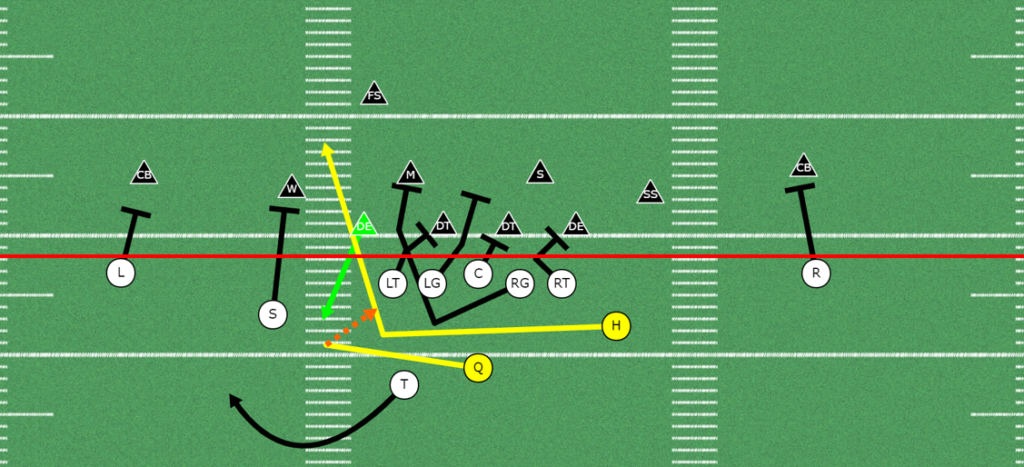
Many coaches won’t consider this a trick play. However, if you can execute this on the
Coaching Points
- Leave the play-side defensive end unblocked. That is who your Q is reading.
- The T and Q pitch relationship should be wide. This wide pitch relationship will stretch the defense horizontally.
- The shovel pitch and timing takes a lot of practice so make sure to commit some practice time to it during the week.
- This is a great play to attack penetrating or aggressive defensive linemen.
Reverse Pass
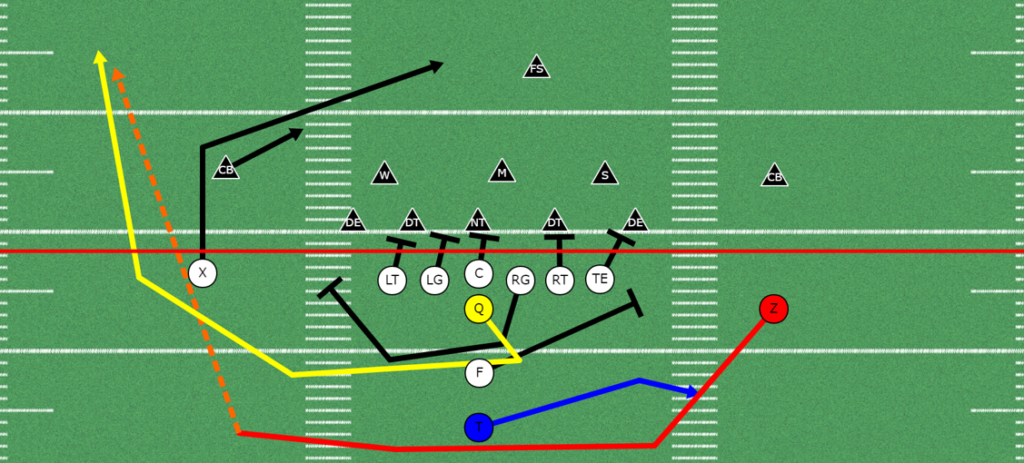
The Reverse Pass is a great trick play that will almost always work. Many times the defense won’t account for the QB in the passing game after he pitches or tosses the football to someone else. This is one of the more simpler trick plays that you can install, which is why it is great for
Coaching Points
- Set this play up first by running the reverse and having the QB lead block.
- Make sure the reverse player gets some depth in the backfield when he is reversing. This will give him more time to plant and execute a good throw.
- Make sure the QB wheels wide after he pitches the ball. You want him to keep away from the safety when he is running his route.
- Backside Split-end will clear out the CB if they are playing man coverage.
- You do need to watch the backside DE (away from toss) because if he aggressively comes off the edge and is playing the reverse he can disrupt the play. For me, I prefer to pull the backside guard and have him seal the DE.
See Also: Reverse Play in Youth Football
Boise State Trick Plays
For the final trick play, I decided to share a video I found on YouTube that had all of Boise State’s trick plays from a couple of years ago. All of these plays featured in this video are awesome and I feel can be executed on the
Conclusion
In my opinion these are the 5 best trick plays for






